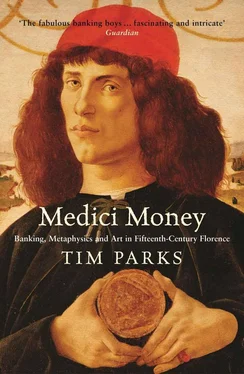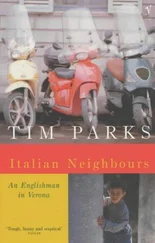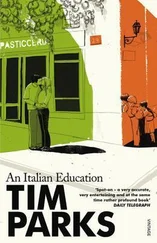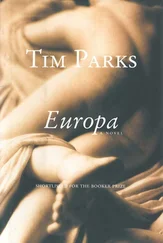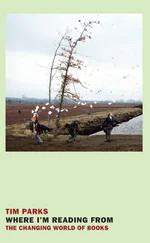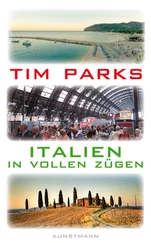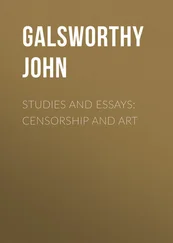RETURNING TO FLORENCE in 1397, Giovanni di Bicci put 5,500 florins into his new bank. Already he had at least doubled the 1,500 his wife brought him eight years earlier. The other partners were Benedetto di Lippaccio of the famous Bardi family, who was already working with Giovanni in Rome — he brought 2,000 florins — and Gentile di Baldassarre Boni, who added 2,500 to make 10,000 in all. Things got off to a bad start. Gentile Boni pulled out after a few months, taking his capital with him. Mistake. While his ex-partners grew rich, he would end his life in a debtors’ prison. Giovanni increased his capital contribution to 6,000 florins to bring the total to 8,000, and after paying rent and salaries and setting aside a reserve for bad debts, the company got through its first eighteen months with a modest profit of 1,200 florins, 10 percent annually, on the nail.
Over the next twenty-three years, up to Giovanni’s retirement in 1420, the bank as a whole would make total profits of 152,820 florins (6,644 p.a.). Giovanni took three-quarters. From 1420 to the next reorganization in 1435, during which time the partners were Cosimo de’ Medici, his brother Lorenzo, and Benedetto de’ Bardi’s brother Ilarione, profits were 186,382 florins (11,648 p.a.). The Medici took two-thirds. From 1435 to 1450, when the bank was in its heyday, profits were 290,791 florins (19,386 p.a.). The Medici, with new partners now, took 70 percent. Keep firmly in mind that a respectable palazzo would cost only a thousand to build and that the vast majority of the populace were too poor to pay so much as a single florin in tax.
How was this done, given that it was forbidden to lend money at an interest? Like all major banks at the time, the Medici were merchants as well as bankers. They would procure goods abroad for rich clients: tapestries, wall hangings, painted panels, chandeliers, manuscript books, silverware, jewels, slaves. They would speculate, buying shiploads of alum (for the textile business) or wool or spices or almonds or silks, moving them from southern to northern Europe, or vice versa, and selling at a higher price.
There was a risk involved. A buyer wouldn’t give you a florin until he’d seen the goods. Demand and prices swung alarmingly, depending on how many merchants had sensed a particular gap in the market. A lot could happen in the months it took a Florentine galley to sail and row west from Pisa across the Mediterranean, through the Strait of Gibraltar into the Atlantic, then north up the Portuguese, Spanish, and French coasts, east to Bruges, and finally across the English Channel to London. Perhaps there were no customers by the time you arrived. Ships could sink, especially the newer, so-called round ships, which were all sail. The bellying sail became an image of chance. The goddess of fortune stood blindfolded at the mast. In short, the cargoes had to be insured. Groups of banks would get together to underwrite eventual losses. “May God and fortune be our aid,” implored the shipping documents.
The merchants reacted to risk by spreading investments over a wide variety of goods and customers. Every bank had its warehouse. Along with the raw silks and wool and linen, an inventory in the Medici’s Florence warehouse in 1427 lists “ un corno di liochorno ”—the horn of a narwhal or rhinoceros. In 1489 a giraffe died on its way to the duchess of Bourbon. Who would deny such enterprising men their profits? Yet the accounts show that trade accounted for only a modest percentage of the bank’s profits. By trade alone, the Medici would not have become fabulously wealthy. How did they do it?
By the art of exchange.
A man comes to our green-covered table in Florence, in Rome, or after 1400 it might be Naples, after 1402 Venice. He wants money. He is a merchant most probably, in any event credit-worthy, otherwise we won’t deal with him. He wants, say, 1,000 florins. Why should we give it to him, if we can’t ask for interest? He isn’t a friend or relative. He offers us an exchange deal. He will take the florins and repay us in pounds sterling, in London. No harm in that. The cashier consults with the branch director. Depending on the conditions of his contract, the director may have to write to the head office. But eventually the money is brought from the strongbox. In return, the merchant — or he might be a magistrate — writes us a cambiale , or bill of exchange:
In the year of our Lord 1417 June 15, in Florence,
1000 Florins.
Pay as is the custom 1000 florins at 40 pence to the florin to whoever is appointed by Giovanni de’ Medici and partners in London. May Christ protect you.
He signs the note. But it is not the signature that is important. It is all the handwriting on the bill. Whoever is to pay out the cash in London will have an example of that handwriting and match it carefully with the bill. In general, all the branches of the Medici banks and all those acting as correspondents for them will have examples of the handwriting of all the managers who have the authority to order payments.
When and how will our client repay us? The “how” is easy. His agent in London will pay our correspondent. In sterling. Or rather our correspondent in London will go to his agent’s office, probably a bank, and hence Italian, someone we know, to demand payment on the appropriate day.
What day? Well, how long does it take to get from Florence to London? How long is a piece of string? It depends how you travel. Overland or galley, in haste or at leisure. The English Channel can be rough, never mind the Bay of Biscay. Fortunately, the Exchangers’ Guild has laid down what is the maximum time that a whole range of journeys from one financial center to another can require. Florence to Bruges, sixty days. Florence to Venice, ten days. Florence to Avignon, thirty days. Florence to Barcelona, sixty days. The time to London is ninety days, or three months. That is what the bill means when it says, “as is the custom.” It is referring, very discreetly, to the time between the payment in florins and the repayment in sterling. If our man has taken his florins on June 15, the custom is that the pounds should be ours on September 13. We could agree on an earlier day if we wanted. But we can’t postpone it, because in that case the whole thing would begin to look rather like a loan and not an exchange deal at all.
In the early days, the Medici bank didn’t have a branch in London, but they had trusted correspondents there. Often the bank’s allies abroad were neighbors, perhaps rivals at home. It is easier to feel solidarity abroad. Copies of the bill of exchange are made and the original is sent to Totto Machiavelli and Ubertino de’ Bardi and company in London. The names are always familiar. The banks run their own courier system. The day comes. In return for a small commission, our correspondent sends a clerk to our client’s agent, who, again in return for a commission, pays out the pounds and pennies. The exchange deal has taken place. How can anybody object?
But where is the return for us, the bank? The bank — this is the official position of all those involved — speculates on the shifting exchange rate in the hope that when it gets its pounds changed back into florins, they will be worth more than the 1,000 florins originally lent. But a child could see that in that case, the bank would always be hesitant to accept a deal. There would be periods when the florin was rising and no one would give you the money because it would doubtless be worth less when it came back in pounds. “ Pro e danno di cambio ,” reads the entry in the Medici bank’s accounts. Profit and loss from exchanges. Out of sixty-seven exchanges for which we have records among London, Bruges, and Venice, only one resulted in a loss for the banker, while the remaining sixty-six saw him making gains that range between 7.7 and 28.8 percent. How?
Читать дальше
